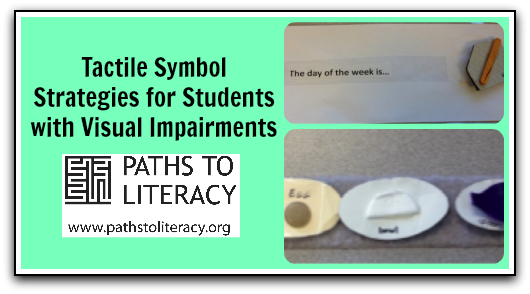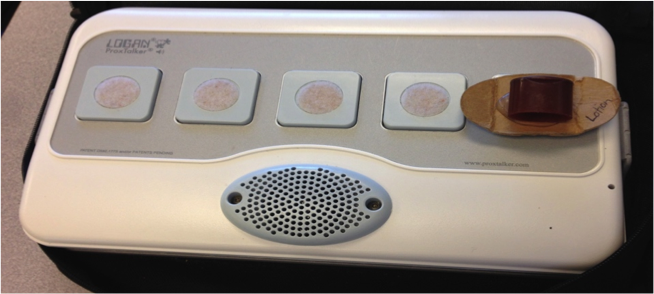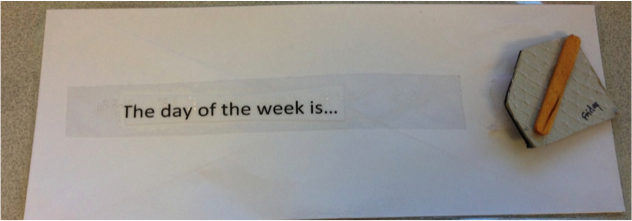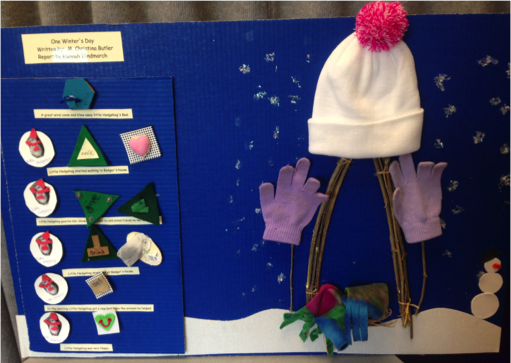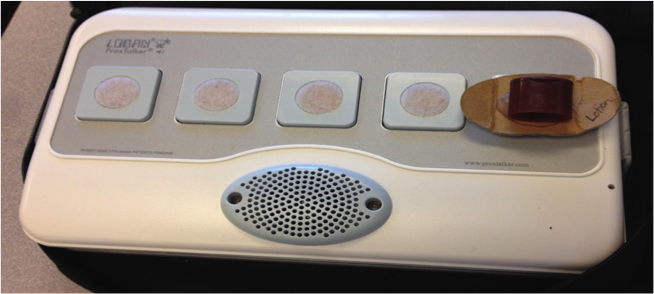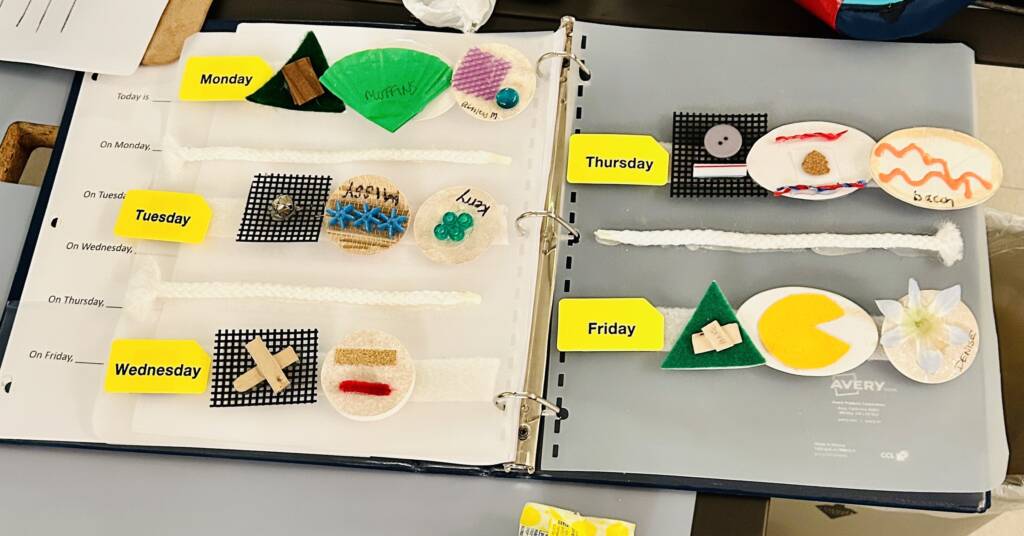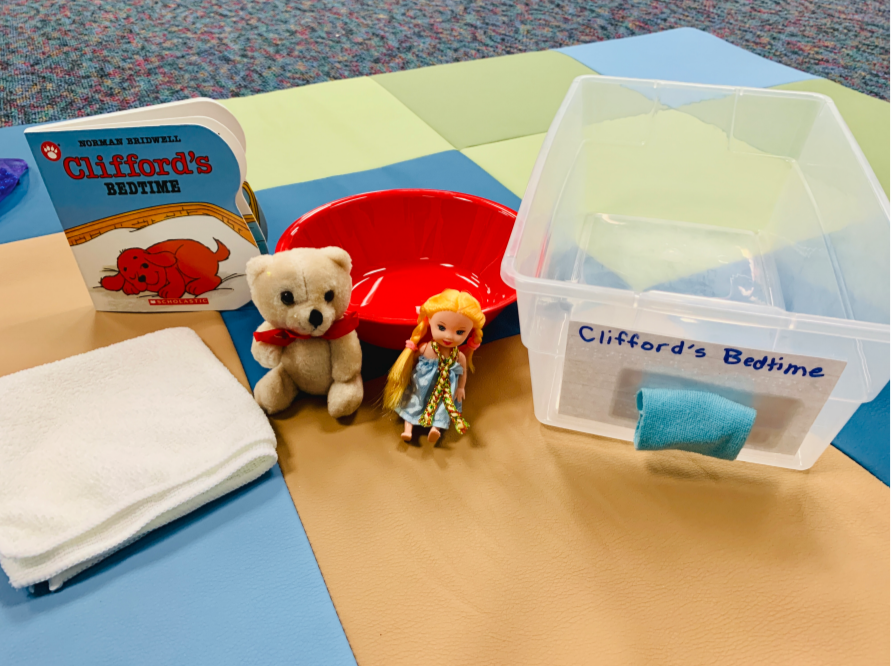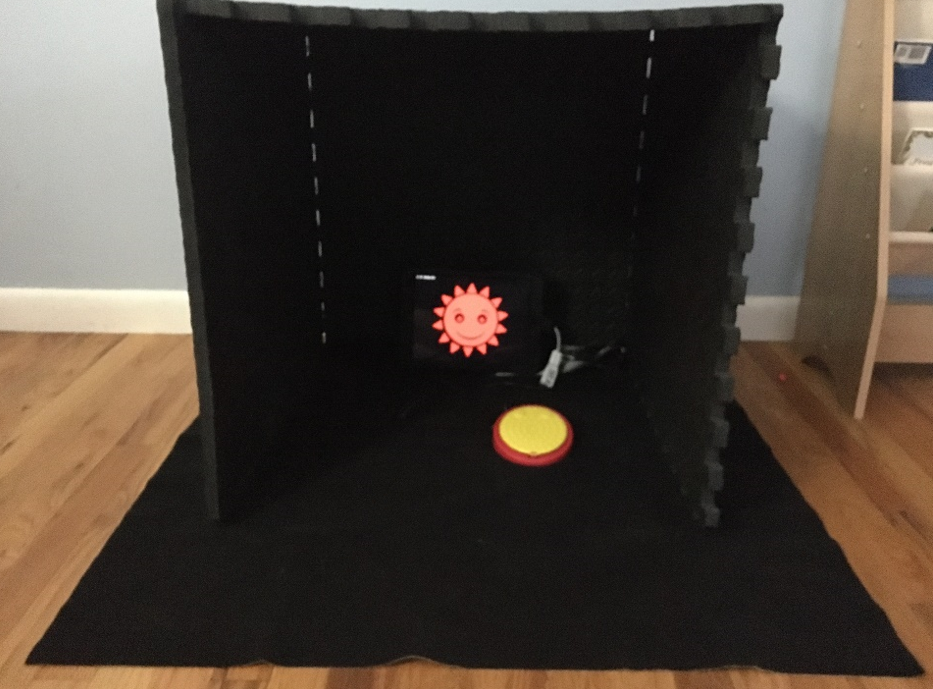Here are some simple strategies to use when working with students with multiple disabilities who are using tactile communication systems.
1. Students can be taught new skills if symbols are arranged in a task analysis format. For example, they can be adhered to a vertical strip to represent steps in a routine.
2. Tactile symbols can easily be reinforced with braille so that students are who are not braille readers are still able to experience a braille-rich environment.
3. Symbols can be used to adapt many projects students may be given in their general education class. For example, a student who is assigned to create a book report can illustrate his/her book through use of tactile symbols.
4. Tactile symbols can also be used to represent different options or choices when asking students a question. For example when asked a question like, “what do you put on your hands?” the answer options can be represented by their symbols.
5. Another important strategy is to combine tactile symbols with technology, such as the Logan Proxtalker. The symbols can easily be labeled so that when student chooses a symbol he/she can receive auditory feedback.
